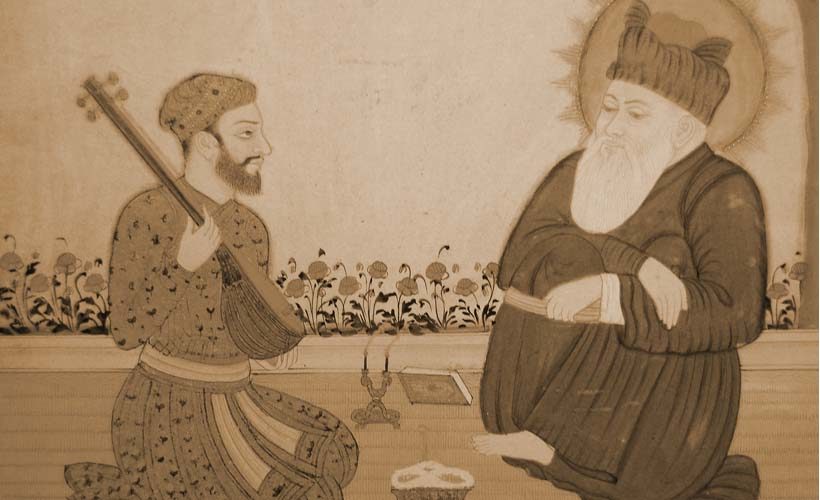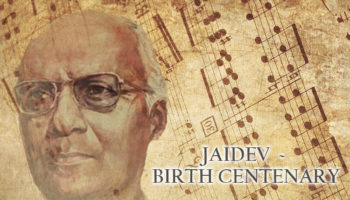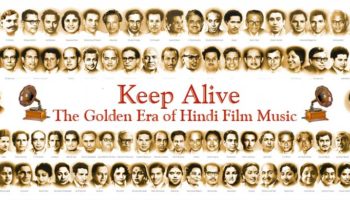Ghazal ~ Poetry with Panache
India is a land of synthesis and syncretism! She is an oceanic phenomenon, embracing magnanimously the various streams and tributaries in her unfathomable depths. Such is the breadth of her acceptance that, in her civilizational sweep, she has a place for every culture, faith, practice and thought. Diverse denomination of varied hue finds expression here.
In this land of saints and savants, peers and paighambars, one finds an unmistakable stamp of Hindustaniat in the warp and weft of the Indian idiom! Be it the bhakti movement or the sufiyana silsila, every movement has been suffused with the surging spirit of sanatanic splendor!

This fact gets demonstrated amply in the Indo-Islamic synthesis – a coming together of culture and religion, a mating of minds and a melding of thoughts, leaving each entity to retain its identity, yet adding up to the mosaic of Indic cosmopolitanism. Such is the impact of that union that the principal forms of Urdu poetry like Qaseeda, Ghazal, Rubayee, Musnavi, Marsiya, Nazm, Mujra, Qawwali transformed this country into a revolutionary realm of artistry and creativity.
These performing arts were in its nascent stages in the earlier era of Delhi Sultanate. From the synthesis of Persian, Arabic, Turkish, Sanskrit, Hindi and other Indian dialects emerged Urdu as the Zubaan-e-Awaam (ज़बान-ए-अवाम) (language of the masses) which sooner developed as a literary language, rich in thought and refined in expression. In other words, Urdu poetry blended Adaa (अदा) panache and style and Adab (अदब) decorum and etiquette in a cohesive fusion.
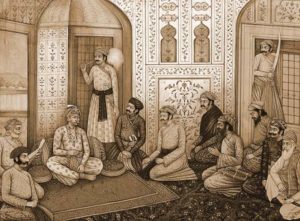 It is purely in the Mughal Era that the flowering and fruition of the quartet, namely, Ghazal ~ Nazm ~ Mujra ~ Qawwali happened. The Mughal Badshahs, apart from being connoisseurs of arts and learning, gave it a robust fillip, leaving the sub-culture as-is!
It is purely in the Mughal Era that the flowering and fruition of the quartet, namely, Ghazal ~ Nazm ~ Mujra ~ Qawwali happened. The Mughal Badshahs, apart from being connoisseurs of arts and learning, gave it a robust fillip, leaving the sub-culture as-is!
Genesis and Genetics of Ghazal
ग़ज़ल ही उर्दू ज़बां की आबरू और आन है,
ग़ज़ल ही शेर~ओ~सुख़न का जिस्म है और जान है।
ग़ज़ल की अपनी क़वाइद, नग़मगी, तर्ज़~ए~बयां,
ग़ज़ल की ये ख़ुसूसियत ही, ग़ज़ल की पहचान है।
ग़ज़ल का हर शेर यूं तो है बंधा इक बहर में,
फिर भी इक दूजे से वो आज़ाद और अंजान है।
ग़ज़ल में बस ‘क़ाफ़िये’ ही मिलते हैं दिल की तरह,
ग़ज़ल वर्ना दिल शिकस्तों की हसीं दास्तान है।
शेर~ओ~सुख़न: Couplets, Poetry
क़वाईद: Rules and regulations; Grammar
नग़मगी: Lyrical content
ख़ुसूसियत: Speciality
तर्ज़~ए~बयां: Melodic articulation of an emotion or expression
बहर: Song length or meter
क़ाफ़िया: Rhyme structure
दिल शिकस्त: Heart broken
Ghazal is a bouquet of emotions, sensitivity, rich and poignant poetry and music and holds the prestige of being known as the Pride of Urdu literature (उर्दू ज़बान की आबरू) and Life of Urdu Poetry (उर्दू शायरी की जान). The Ghazal originated in the 10th century in Persia more as a lyrical genre and has traveled a long way to reach our shores, literally and metaphorically. As a musical genre, it became popular in the 19th century.
The Ghazal originated from the Qaseeda (क़सीदा) which is a poem or panegyric in praise of the kings and emperors in Persia and Arabia or of a nobleman, philanthropist or benefactor… The opening part of the Qaseeda in which the poet generally talks about the Almighty, beauty, love, nature, life and death is called Tamheed (तमहीद) (Introduction) or Tashbeeh (तशबीह) (Comparison). Over a period of time, the Tamheed or Tashbeeh got detached and developed into what is called as Ghazal.
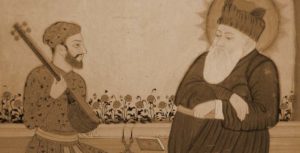
The literal meaning of the Arabic word Ghazal is “Talking to women” and the poetic definition in Persian is “Conversation with the beloved” – ‘सुख़न अज़ ज़नान गुफ़्तन’ !
Shairi (poetry), Mausiqui (music) and Jazbaat (emotions) are the basis of Ghazals.

While a Qaseeda had a minimum of 12 to 13 verses or couplets and ran into more than 100 verses, a Ghazal was restricted to 7 to 12 verses and because of its brevity, settled as the more acceptable and popular form of poetry. The collection of Ghazals is called Deewaan (दीवान) and the collection of all forms of poetry, Bayaaz (बयाज़).
Gamut and Grammar of Ghazal
Sher : The Arabic word Sher (शेर) means a couplet i.e. a poem in two lines, each line known as Misra (मिसरा). Each Sher is a ‘complete poem’ in itself; it is self-sufficient – detachable and quotable – and provides a complete description or expression of a thought or idea. The plural of Sher is Ashaar (अशआर) and a collection of many couplets or Sher is a popular genre of Indian music known as Ghazal.

Generally, each Sher is free or independent (आज़ाद) of the other in thought (ख़याल) and topic (मौज़ू) but not in its structure. It is also possible that a single theme runs through all the couplets (as heard in films where the main purpose is to highlight emotions related to a specific situation or mood). Such a Ghazal is called Musalsal Ghazal (मुसलसल ग़ज़ल) and most of the Hindi film Ghazals fall under the gamut of Musalsal Ghazal.
The Ghazal ordains her own lyrical content and connotation, gamut and grammar, rules and requirements, articulation and enunciation i.e. नग़मगी और ग़नाइयत मौज़ू, क़वाइद, लब-ओ-लहजा, तर्ज़-ए-बयां.
The important features or parameters of a Ghazal are :
Sher (शेर) (couplet),
Matla (मतला) (the opening couplet),
Radeef (रदीफ़) and Qaafiya (क़ाफ़िया) (the rhyme scheme),
Maqta (मक़ता) (the concluding couplet with the takhallus (तख़ल्लुस) i.e. pen name of the poet (optional) in the Maqta.
Behar (बहर) (meter or length of a line)…
Matla : The opening couplet or Sher of a Ghazal is called the Matla and, as a rule, both the lines of the first couplet MUST rhyme with one another. For example :
आज सोचा तो आंसू भर आये,
मुद्दतें हो गईं मुस्कुराए।
Radeef – Qaafiya : The two rhyming words in the Matla are called the Qaafiya. In the above Matla, the rhyming words are आये and मुस्कुराये. In most cases, the Qaafiya is followed by a single word, a set of words or a full phrase which is called the Radeef.
The opening couplets (Matla) of two ghazals are given as illustrations :
रस्म-ए-उलफ़त को निभायें तो निभायें कैसे,
हर तरफ़ आग है दामन को बचायें कैसे।
उनको ये शिकायत है के हम कुछ नहीं कहते,
अपनी तो ये आदत है के हम कुछ नहीं कहते।
In the Matla of the first Ghazal, the rhyming words nibhaayen (निभायेँ) and bachaayen (बचायेँ) are the Qaafiyas and the the single word Kaise (कैसे) which follows the Qaafiya in both the lines is the Radeef.
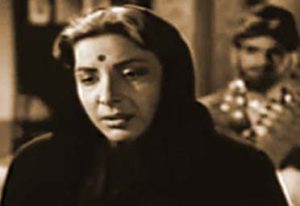 In the Matla of the second Ghazal, the rhyming words shikayat (शिकायत) and aadat (आदत) are the Qaafiyas and the set of words … hai ke hum kuch nahin kehte (है के हम कुछ नहीं कहते) which follow the Qaafiya in both the lines is the Radeef.
In the Matla of the second Ghazal, the rhyming words shikayat (शिकायत) and aadat (आदत) are the Qaafiyas and the set of words … hai ke hum kuch nahin kehte (है के हम कुछ नहीं कहते) which follow the Qaafiya in both the lines is the Radeef.
From there on, the second line (मिसरा) of each couplet needs to rhyme with the Matla or opening couplet throughout the Ghazal. For example, the second Sher of the Ghazal goes
कुछ कहने पे तूफ़ान उठा लेती है दुनिया,
अब इसपे क़यामत पे है के हम कुछ नहीं कहते।
In this Sher, the word Qayamat (क़यामत) is the Qaafiya and the set of words which follows … hai ke hum kuch nahin kehte, the Radeef.
At times, the Radeef may not be there as in the Ghazal आज सोचा तो आंसू भर आये…
Such a Ghazal without the Radeef is called a Ghair-muraddaf Ghazal (ग़ैर मुरद्दफ़ ग़ज़ल). But even in such cases, the Qaafiyas must be present… आये – मुस्कुराये in the said Sher.
Maqta : The last couplet where the poet’s pen name (takhallus – तख़ल्लुस) generally appears is called the Maqta (मक़्ता ) . The literal meaning of Maqta is ‘property’ and connotes the poet’s ownership of the Ghazal.
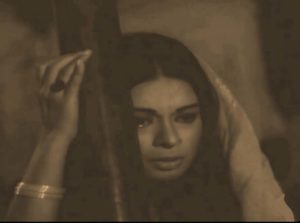 ‘मजरूह’ लिख रहे हैं वो एहल-ए-वफ़ा का नाम,
‘मजरूह’ लिख रहे हैं वो एहल-ए-वफ़ा का नाम,
हम भी खड़े हुए हैं गुनहगार की तरह।
(From the Ghazal हम हैं मता-ए-कूचा-ओ-बाज़ार की तरह – Dastak).
The above mentioned Maqta (last couplet) of the Ghazal ‘Hum hain mataa-e-koocha-bazar ki tarah’ penned by Majrooh Sultanpuri has the poet’s pen name (takhallus) i.e ‘Majrooh’ in the last couplet.
Other instances of film Ghazals where the poet has used his pen name are :
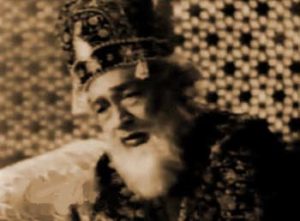 कितना है बदनसीब ‘ज़फ़र’ दफ़न के लिए,
कितना है बदनसीब ‘ज़फ़र’ दफ़न के लिए,
दो गज़ ज़मीन भी न मिली कू-ए-यार में।
(From the Ghazal लगता नहीं है दिल मेरा उजड़े दयार में – Lal Qila)
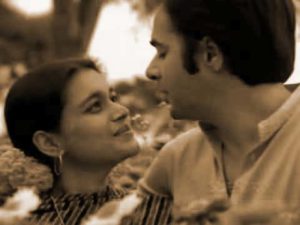 ये महकती हुई ग़ज़ल ‘मख़दूम’,
ये महकती हुई ग़ज़ल ‘मख़दूम’,
जैसे सेहरा में रात फूलों की।
(From the Ghazal फिर छिड़ी रात बात फूलों की – Bazar)
The above two ‘Maqtas’ from the Ghazals of Bahadur Shah ‘Zafar’ and ‘Makhdoom Moinuddin’ have the pen names of the poets: ‘Zafar’ and ‘Makhdoom’ respectively.
Behar : Behar is the meter or the length of a line of a couplet. It is the most essential feature of a Ghazal and needs to be followed strictly while writing one. Both the lines (Misra) in the sher MUST be of the same Behar or length. Also, ALL the Shers in a Ghazal MUST be of the same Behar. If the couplets are not in the same Behar or length, the composition is called imperfect and not considered as a Ghazal; the extra or redundant letter or word which obstructs the flow and fluency while reciting is called sakta (सक्ता).
The Behar indicates or determines the type and the number of words that should appear in each Sher of the Ghazal. The rules of Behar are linked to the number of words and the articulation and pronunciation of words, the basic units of which are the vowels, consonants and / or their combination. There are about 20 – 25 types of Behars (may be more also). However, generally the Behar is categorized in three classes viz. short, medium and long depending upon the length of the misra (i.e. the first line of the Sher).
Some of the most commonly used (or at least heard in film songs) Behars are the one used in the following Ghazals. For illustration, Ghazals of legendary maestro Madan Mohan (hailed as the Ghazal King) falling within the gamut and grammar of Ghazal have been enumerated.
Behar I
| Song | Film |
| Hum ishk mein barbaad hain barbaad rahenge | Ankhen |
| Yoon hasraton ke daagh mohabbat mein dho liye | Adalat |
| Unko ye shikayat hai ke hum kuch nahin kehte | Adalat |
| Jaana tha humse door bahaane bana liye | Adalat |
| Hum hain mataa-e-koocha-o-bazaar ki tarah | Dastak |
| Dil dhoondhta hai phir wohi fursat, ke raat din | Mausam |
| Barbaad mohabbat ki dua saath liye jaa Laila | Laila Majnu |
Behar II
| Song | Film |
| Ishk ek zehar sahi phir bhi piye jaata hoon | Memsahib |
| Na hanso humpe zamaane ke hain thukraaye hue | Gateway of India |
| Naghma-o-sher ki saughaat kise pesh karun | Ghazal |
| Ishk ki garmi-e-jazbaat kise pesh karun | Ghazal |
| Mujhe ye phool na de tujhko dilbari ki qasam | Ghazal |
| Kisiki yaad mein duniya ko hain bhulaaye hue | Jahan Ara |
| Tumhari zulf ke saaye mein sham kar loonga | Naunihal |
| Jaane kya haal ho kal sheeshe ka paimaane ka | Maa Ka Aanchal |
| Rasm-e-ulfat ko nibhaayen to nibhaayen kaise | Dil Ki Raahen |
| Ruke ruke se kadam ruk ke baar baar chale | Mausam |
Behar III
| Song | Film |
| Mohabbat karnewalon ka yahi anjaam hota hai | Ankhen |
| Mohabbat mein kashish hogi to ik din unko paa lenge | Khoobsurat |
| Hamaare baad ab mehfil mein afsaane bayaan honge | Baaghi |
| Badi barbaadiyan lekar meri duniya mein pyar aaya | Dhun |
| Hamen dil mein basa bhi lo ye kehte hain jawan narzren | Ehsan |
The different couplets in each of the three categories are in the same Behar. As such, one can ‘read or recite’ fluently and with considerable ease, the lyrics of one couplet in the Behar of the other within each category. To illustrate again, the lyrics of Yoon hasraton ke daagh mohabbat mein dho liye can be read with the same flow and fluency of Unko ye shikayat hai ke hum kuch nahin kehte or any other couplet mentioned in the list of Ghazals mentioned in Behar I
However, when it comes to the art and craft of setting the lyrics to a tune, the composer is beset with a challenge and his ingenuity is put to test. He or she has to keep in mind the linguistic sound pattern as determined by the vowels, consonants, combination of words as also the emotions, feelings and sensitivities underlying the couplet as highlighted by the Qaafiyas and Radeef. The composer then treats melodically the words, the Qaafiyas and Radeef with appropriate breaks and breathers, pauses and punctuations to highlight and heighten the mood and emotions of the lyrics. In view of this, singing the lyrics of one couplet to the tune of another WILL not only set a discordant and incongruous note but also dilute, gainsay or negate the emotions underlying the lyrics of the couplet.
As such, the Behar has a much greater effect and control in the composition of a Ghazal though the contribution or importance of the other parameters cannot be undermined.
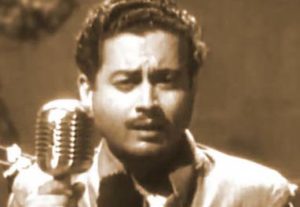 There are two ways of reading or reciting the couplets – Tahtullafaz (तहतुल्लफ़ज) i.e. reading or reciting the couplets in a normal or some animated manner without any musical element. The other one is in Tarannum (तरन्नुम) i.e. in a rhythmic and musical way. In common parlance, they are also called ‘Mushaire ki Tarz’ i.e. a typical style in which the couplets are recited in Mushairas. Instances of such ‘Mushaire ki Tarz’ adapted, embellished and heard in films are Ghazals or Nazms like:
There are two ways of reading or reciting the couplets – Tahtullafaz (तहतुल्लफ़ज) i.e. reading or reciting the couplets in a normal or some animated manner without any musical element. The other one is in Tarannum (तरन्नुम) i.e. in a rhythmic and musical way. In common parlance, they are also called ‘Mushaire ki Tarz’ i.e. a typical style in which the couplets are recited in Mushairas. Instances of such ‘Mushaire ki Tarz’ adapted, embellished and heard in films are Ghazals or Nazms like:
Jin raaton mein neend ud jaati hai,
Sar-e-mehfil jo jala parwana,
Taqdeer ki gardish kya kam thi,
Door hote nahin jo dil mein raha karte hain,
Tang aa chuke hain kashmakash-e-zindagi se hum,
Humko tumhare ishk ne kya kya bana diya,
Jurm-e-ulfat pe hamen log sazaa dete hain,
Kisiki yaad mein duniya ko hain bhulaaye hue,
Baad muddat ke ye ghadi aayi… to name a few.
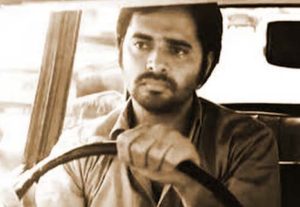 Subject Matter : Originally, the subject matter related to beauty and love and the pain and loss in love but gradually, it became a metaphor for other worldly topics. By the time the Ghazal reached the 13th and 14th century, the gamut of topics expanded from gham-e-jaanan (ग़म-ए-जानां) to gham-e-dauran (ग़म-ए-दौरां) i.e. from women and their beauty to wine and wit and from pain in love to patriotic fervour and praise of almighty to social and political commentary of the contemporary times.
Subject Matter : Originally, the subject matter related to beauty and love and the pain and loss in love but gradually, it became a metaphor for other worldly topics. By the time the Ghazal reached the 13th and 14th century, the gamut of topics expanded from gham-e-jaanan (ग़म-ए-जानां) to gham-e-dauran (ग़म-ए-दौरां) i.e. from women and their beauty to wine and wit and from pain in love to patriotic fervour and praise of almighty to social and political commentary of the contemporary times.
Nazm : The Nazm is an Arabic term which means stringing together of pearls! She is an artistic sequencing of words and lines and a major part of this form of Urdu poetry is written either in rhymed verses or in prose form. While the Ghazal is a more popular form of subjective poetry, the Nazm exemplifies the objective kind.
A Nazm is often resorted to for narrative, descriptive, didactic or satirical purposes with a single presiding thought or theme, logically evolved, developed and concluded with any metrical arrangement that suits the subject or mood. However, progressive writers of the 20th century have exploited the freedom and flexibility of the Nazm; they have taken the liberty of breaking the tradition of Radeef and Qaafiya and have adopted the medium of blank verse or free verse and use of lines of unequal length.
Some of the popular Nazms of Madan Mohan (many of them written within the gamut and grammar and other parameters of Ghazal) are as under :
| Song | Film |
| Meri yaad mein tum na aansoo bahana | Madhosh |
| Chand maddham hai asmaan chup hai | Railway Platform |
| Humse aaya na gaya tumse bulaya na gaya | Dekh Kabira Roya |
| Do ghadi wo jo paas aa baithe | Gateway of India |
| Hamsafar saath apna chhod chale | Aakhri Dao |
| Wo jo milte the kabhi humse deewanon ki tarah | Akeli Mat Jaiyyo |
| Meri mehboob kahin aur mila kar mujhse | Ghazal |
| Rang aur noor ki baraat kise pesh karun | Ghazal |
| Hoke majboor mujhe usne bhulaaya hoga | Haqeeqat |
| Wo chup rahen to dil ke daagh jalte hain | Jahan Ara |
| Baad muddat ke ye ghadi aayi | Jahan Ara |
| Mujhe le chalo phir us gali mein | Sharabi |
| Teri ankhon ke siva duniya mein rakha kya hai | Chirag |
| Meri duniya mein tum aayin kya kya apne saath liye | Heer Ranjha |
| Betaab dil ki tamanna yahi hai | Hanste Zakhm |
| Hai tere saath meri wafa main nahin to kya |
Hindustan Ki Kasam |
| Dil dhoondhta hai phir wohi fursat | Mausam |
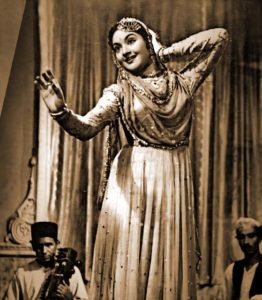 Mujra : Mujra is an animated form of dance originated by courtesans (Tawaif) during the Mughal era. Traditionally, the Mujra was performed at Mehfils (a courtly get together for entertainment of a select audience) and in special houses called Kothas. During Mughal rule in the Indian subcontinent and in other places, Mujra was a traditional family art and often passed down from mother to daughter. The profession was a cross between elegant art and exotic dance with the performers, who served mostly as courtesans, regaling the Mughal royalty or wealthy patrons.
Mujra : Mujra is an animated form of dance originated by courtesans (Tawaif) during the Mughal era. Traditionally, the Mujra was performed at Mehfils (a courtly get together for entertainment of a select audience) and in special houses called Kothas. During Mughal rule in the Indian subcontinent and in other places, Mujra was a traditional family art and often passed down from mother to daughter. The profession was a cross between elegant art and exotic dance with the performers, who served mostly as courtesans, regaling the Mughal royalty or wealthy patrons.
The Mujra is a part or a variation of the classical form of dance, Kathak and inherits a lot of intricate hand movements from the latter. Although it is believed that the gestures and movements in the Mujra have suggestive connotations, most Kathak artistes perform the Mujra quite gracefully and in a dignified manner. Mujra inherits from Kathak a lot of intricate hand movements and the use of the hands in Indian dancing is probably better than in dancing anywhere else.

The richly orchestrated Ghazal, ‘Jab jab tumhen bhulaya tum aur yaad aaye from the historical film “Jahan Ara” has been stylized and composed as a Mujra by Madan Mohan.
Qawali : The Qawali is derived from the Arabic word Qaul which means utterance of the Prophet. A Qawwal is someone who sings a Qaul and Qawali is what a Qawwal sings. It is a musical form associated with the samaa, a spiritual concert, of the Chishti sufi silsila. Generally, the lyrics or poetry in a Qawali implicitly has a spiritual connotation though sometimes the lyrics can be wildly secular or outright pleasure driven. The main themes of Qawali are love, devotion, a quest, search or longing of man for the Divine Being. In other words, in its religious context, it is an exultant and ecstatic ritual which leads the listeners – those with a penchant for poetry – to a state of bliss and trance, guides them towards a spiritual communion with the saints, connects them with the Prophet and eventually with God (Allah)… i.e. a poetic and philosophical journey from Humanity to Divinity, from the Earthly to the Ethereal.

Dr. Iqbal’s famous Ghazal ‘Kabhi ae haqeeqat-e-muntazar nazar aa libaas-e-majaaz mein’ with philosophical and spiritual connotation has been set to Qawali tune by Madan Mohan in the film “Dulhan Ek Raat Ki”. Similarly, the Ghazal, ‘Unse nazren mili aur hijaab aa gaya, Zindagi mein haseen inquilab aa gaya (film “Ghazal”) has been given a rhythmic melody in Qawali style.
Hindi Cinema has encapsulated engagingly this grand synthesis. Scores of films made in the 40s, 50s, 60s have captured the essence of the quartet Ghazal ~ Nazm ~ Mujra ~ Qawali by employing them beautifully, both in the narrative as well as songs. Through the poetic expression with Ada and Adab, poise and panache, Hindi films and film songs have attempted to explore and extrapolate the Indo-Islamic narrative and understand the finer nuances of that grand socio-economic and religio-cultural encounter !!
As the popular saying goes, “Knowledge without Ada and Adab is like fire without wood and Ada and Adab without knowledge is like spirit without a body.”
A list of popular Ghazals from Hindi films down the years is given below:
| Name of Film | Ghazal | Singer/s |
| Aadhi Raat | Dil hi to hai tadap gaya, dard se bhar na aaye kyon | Lata Mangeshkar |
| Aaj aur Kal | Itni haseen itni jawan raat kya karen | Mohammed Rafi |
| Aakhri Dao | Tujhe kya sunaaun main dilruba | Mohammed Rafi |
| Aao Pyar Karen | Jahan tu hai wahan pe chandni ko kaun poochhega | Mohammed Rafi |
| Aasra | Meri zindagi ke charagh ko teri berukhi ne bujha diya | Lata Mangeshkar |
| Abroo | Jinhen hum bhoolna chaahen | Mukesh |
| Actress | Hum apne dil ka fasana unhen suna na sake | Mohammed Rafi |
| Ada | Preetam meri duniya mein do din to rahe hote | Lata Mangeshkar |
| Adalat | Jaana tha humse door bahaane bana liye | Lata Mangeshkar |
| Adalat | Unko ye shikayat hai ki hum kuch nahin kehte | Lata Mangeshkar |
| Adalat | Yoon hasraton ke daagh mohabbat mein dho liye | Lata Mangeshkar |
| Adventures of Robin Hood | Maana mere haseen sanam tu rashq-e-mahtab hai | Mohammed Rafi |
| Agosh | Kisiki aankh ke aansoo hain sitaare na kaho | Lata Mangeshkar |
| Agosh | Mohabbat ek shola hai bacha daaman zamaane | Lata Mangeshkar |
| Ahista Ahista | Kabhi kisiko muqammal jahan nahin milta | Bhupendra / Asha |
| Ahista Ahista | Maana teri nazar mein tera pyar hum nahin | Sulakshana Pandit |
| Ajeeb Ladki | Ek bewafa ko dil ka sahara samajh liya | Talat-Lata |
| Akash Deep | Mujhe dard-e-dil ka pataa na tha | Mohammed Rafi |
| Alif Laila | Bahar aayi khili kaliyan, hanse taare chale aao | Lata Mangeshkar |
| Amanat | Door rehkar na karo baat kareeb aa jao | Mohammed Rafi |
| Amar | Na milta gham to barbaadi ke afsaane kahan jaate | Lata Mangeshkar |
| Anarkali | Mohabbat aisi dhadkan hai jo samjhaayi nahin jaati | Lata Mangeshkar |
| Anarkali | Mujhse matt poochh mere ishq mein kya rakha hai | Lata Mangeshkar |
| Andaz | Uthaaye ja unke sitam aur jeeye jaa | Lata Mangeshkar |
| Ankhen (1950) | Hum ishq mein barbaad hain, barbaad rahenge | Mohammed Rafi |
| Ankhen (1968) | Is mulk ki sarhad ki nigehbaan hain ankhen | Mohammed Rafi |
| Ankhen (1968) | Milti hai zindagi mein mohabbat kabhi kabhi | Lata Mangeshkar |
| Anmol Ghadi | Jawan hai mohabbat haseen hai zamana | Noorjahan |
| Anmol Ratan | Jab kisike rukh pe zulfen aake lehraane lagin | Talat Mahmood |
| Anokha Pyar | Mere liye woh gham-e-intzaar chhod gaye | Lata Mangeshkar |
| Anokhi Ada | Kabhi dil dil se takraata to hoga | Mukesh |
| Anokhi Raat | Mile na phool to kaanton se dosti karli | Mohammed Rafi |
| Apsara | Hardam tumhin ko pyar kiye jaa rahi hoon main | Talat-Asha |
| Arth | Jhuki jhukisi nazar beqaraar hai ke nahin | Jagjit Singh |
| Arth | Tum itna kyon muskura rahe ho | Jagjit Singh |
| Arzoo (1950) |
Ae dil mujhe aisi jagah le chal | Talat Mahmood |
| Arzoo (1965) | Chhalke teri ankhon se sharab aur zyaada | Mohammed Rafi |
| Baaghi | Hamaare baad ab mehfil mein afsaane bayaan honge | Lata Mangeshkar |
| Baarish | Ye arzoo thi kabhi hum bahaar dekhenge | Lala Mangeshkar |
| Baaz | Mujhe dekho hasrat ki tasveer hoon main | Talat Mahmood |
| Baazi | Tadbeer se bigdi hui taqdeer banaale | Geeta Roy |
| Badi Bahu | Badli teri nazar to nazaare badal gaye | Lata Mangeshkar |
| Badi Maa | Kisi tarah se mohabbat mein chain pa na sake | Noorjahan |
| Badi Maa | Roshni apni umangon ki mitaakar chal diye | Noorjahan |
| Badshah | Rulakar chal diye ik din hansee bankar jo aaye the | Hemant Kumar |
| Baharen Phir Bhi Aayengi | Woh hanske mile humse, hum pyar samajh baithe | Asha Bhosle |
| Bairam Khan | Ashkon pe hua khatm mere gham ka fasana | Shamshad Begum |
| Barsaat Ki Raat | Mayoos to hoon waade se tere | Mohammed Rafi |
| Bawre Nain | Khayalon mein kisike is tarah aaya nahin karte | Mukesh-Geeta Roy |
| Bawre Nain | Teri duniya mein dil lagta nahin | Mukesh |
| Bazar (1949) | Sajan ki galiyan chhod chale | Lata Mangeshkar |
| Bazar (1982) |
Dikhaayi diye yoon ke bekhud kiya hai | Lata Mangeshkar |
| Bazar (1982) |
Phir chhidi raat baat phoolon ki | Talat Aziz-Lata |
| Bewafa | Tumko fursat ho meri jaan idhar dekh to lo | Talat Mahmood |
| Bewafa | Dil matwala laakh sambhaala | Talat Mahmood |
| Biwi | Akele mein woh ghabraate to honge | Mohammed Rafi |
| Chambal Ki Kasam | Simti huin ye ghadiyan | Rafi-Lata |
| Chandi Ki Deewar | Ashkon mein jo paaya hai | Talat Mahmood |
| Chandni Raat | Khabar kya thi ki gham khaana padega | Rafi-Shamshad |
| Chhaila Babu | Tere pyar ne mujhe gham diya | Mohammed Rafi |
| Chhoti Chhoti Baaten | Zindagi ka ajab fasana hai | Mukesh-Lata |
| Chunariya | Dil-e-nashaad k jeene ki hasrat ho gayi tumse | Lata Mangeshkar |
| Chunariya | Sab kuch lutaaya humne aakar teri gali mein | Mohammed Rafi |
| Dard (1952) | Hum dard ke maaron ka itna hi fasana hai | Talat Mahmood |
| Dard (1980) | Ahl-e-dil yoon bhi nibha lete hain | Bhupendra / Lata |
| Dastaan | Na tu zameen ke liye hai na asmaan ke liye | Mohammed Rafi |
| Dastak | Hum hain mataa-e-koocha-o-bazar ki tarah | Lata Mangeshkar |
| Deedar | Naseeb dar pe tere azmaane aaya hoon | Mohammed Rafi |
| Devar | Baharon ne mera chaman lootkar | Mukesh |
| Dil Diya Dard Liya | Koyi saghar dil ko behlaata nahin | Mohammed Rafi |
| Dil Hi To Hai | Bhoole se mohabbat kar baitha | Mukesh |
| Dil Hi To Hai | Tumhari mast nazar gar idhar nahin hoti | Mukesh-Lata |
| Dil Ki Raahen | Aap ki baaten kahen ya apna afsana kahen | Lata Mangeshkar |
| Dil Ki Raahen | Rasm-e-ulfat ko sunaayen to sunaayen kaise | Lata Mangeshkar |
| Dil Ne Phir Yaad Kiya | Ye dil hai mohabbat ka pyaasa | Mukesh |
| Dillagi | Tere kooche mein armaanon ki duniya leke aaya | Mohammed Rafi |
| Diwana | Tasveer banaata hoon teri khoon-e-jigar se | Mohammed Rafi |
| Do Badan | Naseeb mein jiske jo likha tha | Mohammed Rafi |
| Do Badan | Raha gardishon mein hardam meri ishq ka sitara | Mohammed Rafi |
| Do Phool | Tadap tadap ke kati umr ashiyaane mein | Lata Mangeshkar |
| Do Raha | Mohabbat tarq ki maine | Talat Mahmood |
| Do Raha | Tera khayal dil se mitaaya nahin abhi | Talat Mahmood |
| Dost | Badnaam mohabbat kaun kare | Noorjahan |
| Dooriyan | Zindagi mein jab tumhare gham nahin the | Bhupendra-Anuradha |
| 1857 | Gham-e-ashiyana sataayega kab tak | Suraiya |
| Ek Mahal Ho Sapnon Ka | Dekha hai zindagi ko tujhe itna kareeb se | Kishore Kumar |
| Ek Nazar | Hameen kare koyi surat unhen bulaane ki | Lata Mangeshkar |
| Ek Nazar | Pehle sau baar ishar aur udhar dekha hai | Lata Mangeshkar |
| Ek Thi Ladki | Ab haal-e-dil ya haal-e-jigar kuch na poochhiye | Rafi-Lata |
| Fariyad | Haal-e-dil unko sunaana na, sunaaya na gaya | Suman Kalyanpur |
| Free Love | Hum kashmakash-e-gham se guzar kyon nahin jaate | Lata Mangeshkar |
| Gaman | Aap ki yaad aati rahi raat bhar | Chhaaya Ganguli |
| Gaman | Ajeeb saaneha mujhpar guzar gaya yaaro | Hariharan |
| Gaman | Seene mein jalan ankhon mein toofan sa kyon hai | Suresh Wadkar |
| Gateway of India | Na hanso humpe zamaane ke hain thukraaye hue | Lata Mangeshkar |
| Gateway of India | Sapne mein sajan se do baaten | Lata Mangeshkar |
| Ghar Ghar Mein Diwali | Kahan kho gayi hai bahaar aate aate | Lata Mangeshkar |
| Ghayal | Hazaron khwahishen aisi ki har khwahish pe dum nikle | G M Durrani |
| Ghazal | Ishq ki garmi-e-jazbaat kise pesh karun | Mohammed Rafi |
| Ghazal | Mujhe ye phool na de tujhko dilbari ki qasam | Rafi-Suman |
| Ghazal | Naghma-o-sher ki saughat kise pesh karun | Lata Mageshkar |
| Grihasthi | Tere naaz uthaane ko jee chaahta hai | Mukesh-Shamshad |
| Gulbahar | Gar teri nawazish ho jaaye | Talat Mahmood |
| Gunah | Mere khayalon mein aake gale lagaa ja mujhe | Talat Mahmood |
| Hamare Gham Se Mat Khelo | Aansoo chhupaaye aankh mein | Talat Mahmood |
| Hanste Zakhm | Aaj socha to aansoo bhar aaye | Lata Mangeshkar |
| Hum Dono | Kabhi khud pe kabhi halaat pe rona aaya | Mohammed Rafi |
| Jab Pyar Kisise Hota Hai | Teri zulfon se judaai to nahin maangi thi | Mohammed Rafi |
| Jahan Ara | Haal-e-dil yoon unhen sunaya gaya | Lata Mangeshkar |
| Jahan Ara | Jab jab tumhen bhulaaya, tum aur yaad aaye | Lata-Asha |
| Jahan Ara | Main teri nazar ka suroor hoon | Talat Mahmood |
| Joru Ka Bhai | Teri zulfon se pyar kaun kare | Talat Mahmood |
| Jugnu | Hamen to sham-e-gham mein kaatni hai zindagi apni | Noorjahan |
| Junoon | Ishq ne todi sar pe qayamat | Mohammed Rafi |
| Kaajal | Chhoo lene do naazuk honthon ko | Mohammed Rafi |
| Kaajal | Ye zulf agar khulke bikhar jaaye to achha | Mohammed Rafi |
| Kalpana | Bekasi hadh se guzar jaaye | Asha Bhosle |
| Khandaan (1942) |
Mere liye jahan mein chain na qaraar hai | Noorjahan |
| Khandaan (1942) |
Tu kaunsi badli mein mere chand hai aaja | Noorjahan |
| Khandaan (1965) | Kal chaman tha aaj ik sehra hua | Mohammed Rafi |
| Khandaan (1979) | Ye mulaqaat ik bahana hai | Lata Mangeshkar |
| Khoobsurat | Mohabbat mein kashish hogi to ik din unko paa lenge | Talat Mahmood |
| Khunnas | Ishq ne kya kya ki na buraayi | Mohammed Rafi |
| Kinare Kinare | Dekh li teri khudaayi, bas mera dil bhar gaya | Talat Mahmood |
| Kinare Kinare | Har aas ashkbaar hai, har saans beqarar hai | Lata Mangeshkar |
| Kinare Kinare | Jab gham-e-ishq sataata hai to hans leta hoon | Mukesh |
| Kundan | Shikayat kya karun donon taraf gham ka fasana hai | Lata Mangeshkar |
| Ladli | Tumhare bulaane ko ji chaahta hai | Lata Mangeshkar |
| Lahore | Baharen phir bhi aayengi magar hum tum juda honge | Lata Mangeshkar |
| Lahore | Toote hue armaanon ki ik duniya basaaye | Lata Mangeshkar |
| Laila Majnu | Barbaad mohabbat ki dua saath liye jaa | Mohammed Rafi |
| Lajawab | Zamaane ka dastoor hai ye purana | Mukesh-Lata |
| Lal Pathhar | Unke khayal aaye to aakar chale gaye | Mohammed Rafi |
| Lal Qila | Lagta nahin hai dil mera ujde dayaar mein | Mohammed Rafi |
| Lal Qila | Na kisiki aankh ka noor hoon | Mohammed Rafi |
| Light House | Tang aa chuke hain kashmakash-e-zindagi se hum | Asha Bhosle |
| Mahal | Ghabrake jo hum sarko takraayen to achha | Rajkumari |
| Mahal | Mushqil hai bahut mushqil chaahat ka bhula dena | Lata Mangeshkar |
| Mamta | Rehte the kabhi jinke dil mein | Lata Mangeshkar |
| Mandi | Shamsheer baher na maang bhari | Preeti Sagar |
| Mandi | Zabaanen badalte hain har aan khubaan | Asha Bhosle |
| Mausam | Ruke ruke se kadam rukke baar baar chale | Lata Mangeshkar |
| Meenar | Kabhi tanhaiyon mein ek aisi bhi ghadi aayi | Talat Mahmood |
| Memsahib | Ishq ek zahar sahi phir bhi jeeye jaata hoon | Asha Bhosle |
| Mere Huzoor | Kya kya na sahen hum na sitam aap ki khaatir | Mere Huzoor |
| Mirza Ghalib | Aah ko chaahiye ek umr asar hone tak | Suraiya |
| Mirza Ghalib | Dil-e-nadaan tujhe hua kya hai | Talat-Suraiya |
| Mirza Ghalib | Hai bas ke har ek unke ishaare mein nishaan aur | Mohammed Rafi |
| Mirza Ghalib | Ishq mujhse nahin wahshat hi sahi | Talat Mahmood |
| Mirza Ghalib | Nuktacheen hai gham-e-dil | Suraiya |
| Mirza Ghalib | Phir mujhe deeda-e-tar yaad aaya | Talat Mahmood |
| Mirza Ghalib | Rahiye ab aisi jagah chalkar jahan koyi na ho | Suraiya |
| Mirza Ghalib | Ye na thi hamari qismat ki visaal-e-yaar hota | Suraiya |
| Mirza Sahiban | Haath seene pe jo rakhdo to qaraar aa jaaye | Durrani-Noorjahan |
| Miss Coca Cola | Jhuka jhuka ke nigaahen milaaye jaate hain | Mukesh-Asha |
| Mughal-e-Azam | Ae ishq ye sab duniyawale bekaar ki baaten karte hain | Lata Mangeshkar |
| Mulzim | Deewana kehke aaj mujhe phir pukaariye | Mohammed Rafi |
| Mumtaz Mahal | Dil ki dhadkan banaa liya unko | Khurshid |
| Mumtaz Mahal | Jala patang to ismein qusoor kiska hai | Khurshid |
| Mumtaz Mahal | Jo humpe guzarti hai sitaaron se poochhiye | Khurshid |
| Naach | Ae ishq hamen barbaad na kar | Rafi-Suraiya |
| Naata | Is bewafa jahan ka dastoor hai purana | Lata Mangeshkar |
| Nawab | Kab tak uthayen aur ye gham intzaar ka | Rafi-Lata |
| Naubahar | Kisi surat lagi dil ki behal jaaye to achha ho | Talat Mahmood |
| Naubahar | Woh paas nahin majboor hai dil | Lata Mangeshkar |
| Naunihal | Tumhari zulf ke saaye mein shaam kar loonga | Mohammed Rafi |
| Nausherwan-e-Adil | Ye hasrat hai ke is duniya mein | Mohammed Rafi |
| Padmini | Bedard tere dard ko seene se lagaake | Lata Mangeskhar |
| Parchhain | Katate hain dukh mein ye din | Lata Mangeshkar |
| Pardesi | Pehle jo mohabbat se inkaar kiya hota | Khurshid |
| Pehli Nazar | Dil jalta hai to jalne de | Mukesh |
| Phir Wohi Dil Laaya Hoon | Aanchal mein sajaa lena kaliyan | Mohammed Rafi |
| Pukar | Zindagi ka saaz bhi kya saaz hai | Naseem Banu |
| Raat aur Din | Phool sa chehra chand si rangat | Mohammed Rafi |
| Raat Ki Rani | Jin raaton mein neend ud jaati hai | Mohammed Rafi |
| Rajhath | Aaye bahar banke lubhaakar chale gaye | Mohammed Rafi |
| Rajkumar | Is rang badalti duniya mein | Mohammed Rafi |
| Romeo and Juliet | Donon jahan teri mohabbat mein haarke | Khayyam-Zohrabai |
| Roti | Woh hans rahe hain aah kiye jaa raha hoon main | Begum Akhtar |
| Saath Saath | Tumko dekha to ye khayal aaya | Jagjit Singh |
| Sabz Bagh | Meri barbaadiyon pe muskuraane aa gaya koyi | Lata Mangeshkar |
| Sabz Bagh | Mere dil ke tadapne ka tamasha dekhnewale | Lata Mangeshkar |
| Sagai | Mohabbat mein aise zamaane bhi aaye | Talat-Lata |
| Saiyyan | Qismat mein khushi ka naam nahin | Lata Mangeshkar |
| Sameera | Zehar deta hai mujhe koyi dawa deta hai | Bhupendra /Asha |
| Sangdil | Woh to chale gaye ae dil | Lata Mangeshkar |
| Sangdil | Ye hawa ye raat ye chandni | Talat Mahmood |
| Sanskar | Mohabbat ke jhoothe saharon ne loota | Talat Mahmood |
| Sarfarosh | Hoshwalon ko khabar kya bekhudi kya cheez hai | Jagjit Singh |
| Shaan | Tadap ae dil tadapne se zara araam aata hai | Suraiya |
| Shahjahan | Chaah barbaad karegi hamen maloom na tha | K L Saigal |
| Shaheed | Sarfaroshi ki tamanna ab hamaare dil mein hain | Mohammed Rafi |
| Shama | Aap se pyar hua jaata hai | Suraiya |
| Shama | Dhadakte dil ki tamannao mera pyar ho tum | Suraiya |
| Shama | Mast ankhon mein shararat kabhi aisi to na thi | Suraiya |
| Shama | Woh saadgi kahen ise deewangi kahen | Mohammed Rafi |
| Shama Parwana | Sar-e-mehfil jo jala parwana | Rafi-Suraiya |
| Sheesha | Teri mehfil mein dil thaame tera diwana aata hai | Mohammed Rafi |
| Shehnai | Na jhatko zulf se paani ye moti phoot jaayenge | Mohammed Rafi |
| Shirin Farhad | Na taaj-e-shaahi na badshaahi | Mohammed Rafi |
| Shisham | Sataayega kise tu asmaan jab hum nahin honge | Mukesh |
| Shokhiyan | Raaton ki neend chheen li | Suraiya |
| Sitara | Taqdeer ki gardish kya kam thi | Lata Mangeshkar |
| Sunehre Kadam | Maangne se jo maut mil jaaye | Lata Mangeshkar |
| Susheela | Bemuravvat bewafa begaana-e-dil aap hain | Mubarak Begum |
| Taj Mahal | Jurm-e-ulfat pe hamen log sazaa dete hain | Lata Mangeshkar |
| Taj Mahal | Paon chhoo lene do phoolon ko inayat hogi | Rafi-Lata |
| Teen Deviyan | Kahin bekhayal hokar yoon hi chhoo liya kisine | Mohammed Rafi |
| Udan Khatola | Mohabbat ki raahon mein chalna sambhalke | Mohammed Rafi |
| Umrao Jaan | Dil cheez kya hai aap meri jaan leejiye | Asha Bhosle |
| Umrao Jaan | In ankhon ki masti ke mastane hazaaron hain | Asha Bhosle |
| Umrao Jaan | Justuju jiski thi usko to na paaya humne | Asha Bhosle |
| Umrao Jaan | Ye kya jagah hai dosto ye kaunsa dayaar hai | Asha Bhosle |
| Umrao Jaan | Zindagi jab bhi teri bazm mein laati hai hamen | Talat Aziz |
| Villagi Girl | Baithi hoon teri yaad ka lekar ke sahara | Noorjahan |
| Village Girl | Kis tarah bhoolega dil unka khayal aaya hua | Noorjahan |
| Yasmin | Mujhpe ilzaam-e-bewafai hai | Lata Mangeshkar |
| Ye Dil Kisko Doon | Phir aane laga yaad wohi pyar ka aalam | Mohammed Rafi |
| Zamindar | Armaan tadapte hain pehlu mein tere aake | Shanta Apte |
| Zeenat | Bulbulo mat ro yahan aansoo bahana hai mana | Noorjahan |
| Ziddi | Marne ki duaayen kyon maangun | Kishore Kumar |
| Zindagi | Humne jafa na seekhi, unko wafa na aayi | Mohammed Rafi |
Errors and Omissions Exempted!!
Manohar ‘Mohabbat’ Iyer
Photos Courtesy: Google

